- Clone
- RS38E (See other available formats)
- Regulatory Status
- RUO
- Workshop
- VIII
- Other Names
- BST2, Tetherin, HM1.24, Bone marrow stromal antigen 2
- Isotype
- Mouse IgG1, κ
- Barcode Sequence
- AAGAGCCGTTGTGAA
| Cat # | Size | Price | Quantity Check Availability | ||
|---|---|---|---|---|---|
| 348417 | 10 µg | $358.00 | |||
CD317, also known as BST2, Tetherin, and HM1.24, is a type II transmembrane GPI-protein with a molecular weight of about 29-33 kD. It is an interferon-induced protein expressed on dendritic cells, plasma cells, B lymphoblast cells, monocytes, granulocytes, T cells, NK cells, stromal cells, and some non-hematopoietic cells. BST2 inhibits cytokine production through interaction with ILT7 (CD85g). It is also involved in the regulation of B cell growth. More importantly, BST2 has been found to restrict the release of a number of viruses from infected cells, including all tested retroviruses (such as HIV-1) and some arenaviruses and filoviruses. In HIV-1 studies, it has been reported that BST2 retains the nascent virons on the surface of infected cells by incorporation of the protein into HIV-1 particles. HIV-1 Vpu is able to induce BST2 degradation.
Product Details
- Verified Reactivity
- Human, Cynomolgus, Rhesus
- Reported Reactivity
- African Green, Baboon, Pigtailed Macaque
- Antibody Type
- Monoclonal
- Host Species
- Mouse
- Formulation
- Phosphate-buffered solution, pH 7.2, containing 0.09% sodium azide and EDTA
- Preparation
- The antibody was purified by chromatography and conjugated with TotalSeq™-A oligomer under optimal conditions.
- Concentration
- 0.5 mg/mL
- Storage & Handling
- The antibody solution should be stored undiluted between 2°C and 8°C. Do not freeze.
- Application
-
PG - Quality tested
- Recommended Usage
-
Each lot of this antibody is quality control tested by immunofluorescent staining with flow cytometric analysis and the oligomer sequence is confirmed by sequencing. TotalSeq™-A antibodies are compatible with 10x Genomics Single Cell Gene Expression Solutions.
To maximize performance, it is strongly recommended that the reagent be titrated for each application, and that you centrifuge the antibody dilution before adding to the cells at 14,000xg at 2 - 8°C for 10 minutes. Carefully pipette out the liquid avoiding the bottom of the tube and add to the cell suspension. For Proteogenomics analysis, the suggested starting amount of this reagent for titration is ≤ 1.0 µg per million cells in 100 µL volume. Refer to the corresponding TotalSeq™ protocol for specific staining instructions.
Buyer is solely responsible for determining whether Buyer has all intellectual property rights that are necessary for Buyer's intended uses of the BioLegend TotalSeq™ products. For example, for any technology platform Buyer uses with TotalSeq™, it is Buyer's sole responsibility to determine whether it has all necessary third party intellectual property rights to use that platform and TotalSeq™ with that platform. - Additional Product Notes
-
TotalSeq™ reagents are designed to profile protein levels at a single cell level following an optimized protocol similar to the CITE-seq workflow. A compatible single cell device (e.g. 10x Genomics Chromium System and Reagents) and sequencer (e.g. Illumina analyzers) are required. Please contact technical support for more information, or visit biolegend.com/totalseq.
The barcode flanking sequences are CCTTGGCACCCGAGAATTCCA (PCR handle), and BAAAAAAAAAAAAAAAAAAAAAAAAAAAAAA*A*A (capture sequence). B represents either C, G, or T, and * indicates a phosphorothioated bond, to prevent nuclease degradation.
View more applications data for this product in our Scientific Poster Library. -
Application References
(PubMed link indicates BioLegend citation) - RRID
-
AB_2924548 (BioLegend Cat. No. 348417)
Antigen Details
- Structure
- Type II transmembrane, GPI-anchored protein, 29-33 kD
- Distribution
-
Dendritic cells, plasma cells, B lymphoblast cells, monocytes, granulocytes, T cells, NK cells, stromal cells
- Function
- Regulate B cell growth, inhibit cytokine production, retain progeny virons on the surface of infected cells
- Ligand/Receptor
- ILT7 (CD85g)
- Cell Type
- B cells, Dendritic cells, Granulocytes, Monocytes, NK cells, Plasma cells, T cells
- Biology Area
- Costimulatory Molecules, Immunology, Innate Immunity
- Molecular Family
- Adhesion Molecules, CD Molecules
- Antigen References
-
1. Sugamata OT, et al. 1999. Biochem. Bioph. Res. Co. 258:583.
2. Neil SJ, et al. 2008. Nature 451:425.
3. Fitzpatrick K, et al. 2010. PLoS Pathog. 6:e1000701.
4. Azuma KS, et al. 2008. Cancer Sci. 99:2461.
5. Cao W, et al. 2009. J. Exp. Med. 206:1603.
6. Zola H, et al. 2007. Leukocyte and Stromal Cell Molecules:The CD Markers. - Gene ID
- 684 View all products for this Gene ID
- UniProt
- View information about CD317 on UniProt.org
Other Formats
View All CD317 Reagents Request Custom Conjugation| Description | Clone | Applications |
|---|---|---|
| Purified anti-human CD317 (BST2, Tetherin) | RS38E | FC |
| Alexa Fluor® 647 anti-human CD317 (BST2, Tetherin) | RS38E | FC |
| PE anti-human CD317 (BST2, Tetherin) | RS38E | FC |
| APC anti-human CD317 (BST2, Tetherin) | RS38E | FC |
| PerCP/Cyanine5.5 anti-human CD317 (BST2, Tetherin) | RS38E | FC |
| PE/Cyanine7 anti-human CD317 (BST2, Tetherin) | RS38E | FC |
| TotalSeq™-A0936 anti-human CD317 (BST2, Tetherin) | RS38E | PG |
Compare Data Across All Formats
This data display is provided for general comparisons between formats.
Your actual data may vary due to variations in samples, target cells, instruments and their settings, staining conditions, and other factors.
If you need assistance with selecting the best format contact our expert technical support team.
-
Purified anti-human CD317 (BST2, Tetherin)
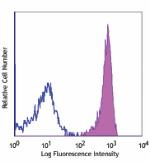
Human peripheral blood monocytes stained with purified RS38E... -
Alexa Fluor® 647 anti-human CD317 (BST2, Tetherin)
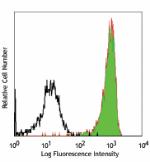
Human peripheral blood monocytes stained with RS38E Alexa Fl... -
PE anti-human CD317 (BST2, Tetherin)
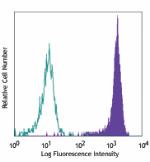
Human peripheral blood monocytes stained with RS38E PE -
APC anti-human CD317 (BST2, Tetherin)

Human peripheral blood monocytes stained with RS38E APC -
PerCP/Cyanine5.5 anti-human CD317 (BST2, Tetherin)
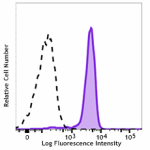
Human peripheral blood cells were stained with CD317 (clone ... -
PE/Cyanine7 anti-human CD317 (BST2, Tetherin)
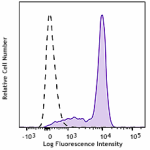
Human peripheral blood was incubated with True-Stain Monocyt... -
TotalSeq™-A0936 anti-human CD317 (BST2, Tetherin)
